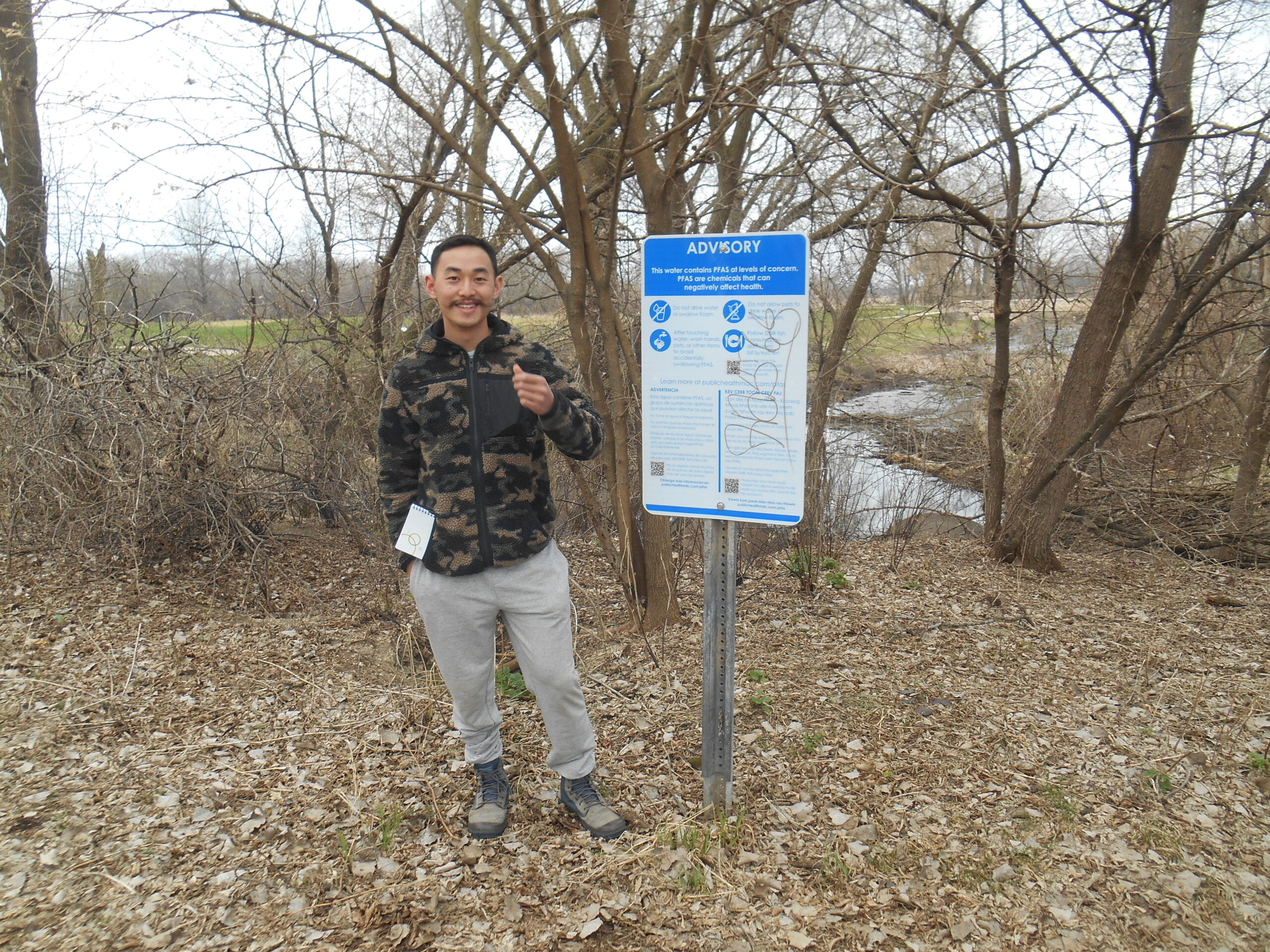MEJO’s Touyeng Xiong stands next to PFAS “advisory” sign next to heavily PFAS-contaminated Starkweather Creek just downstream of the Dane County Regional Airport and Truax Air National Guard base, near the Bridges Golf Course. With spring coming on, more people–especially children–are playing outside and in the public spaces near the creek.
What are our public health agencies doing to warn people about the poisons in the creek?
The sign says: “This water contains PFAS at levels of concern. PFAS are chemicals that can negatively affect health.”
How would a member of the general public–or a child–reading this sign interpret it? Will it prompt them to take precautions? Do they even know what PFAS is? What does “levels of concern” mean? What does “Can negatively affect health” mean?
The sign then advises that people “not drink water or swallow foam” (and do not allow pets to do so), follow DNR fish advisories (it includes a QR code to find them), and “after touching water, wash hands, pets, or other items to avoid accidentally swallowing PFAS.”
A City of Madison engineer and a Public Health sanitarian designed this sign, with DNR’s approval. Email these responsible government public servants and ask: What does “levels of concern” mean? More specifically, what PFAS “levels” were found in Starkweather Creek? On what scientific basis did they trigger “concerns”? What scientific studies were used in developing the advice on this sign?
The last Starkweather water data we can publicly access is from 2019. Have the city, county, and/or Public Health tested creek water more recently, especially since the F-35 construction began at Truax Field, disrupting PFAS-contaminated soils and sending it downstream right into the creek where Touyeng is standing? Have these entities gathered any data on PFAS levels in creek sediments, where much of this PFAS would have deposited? What about foam? Where can the public access that data?**
Many children, kayakers/canoeists, and pets wade in this shallow creek during the spring, summer, and fall, touching and stirring up sediments. Fish and wildlife, of course, directly and indirectly take up sediments in a variety of ways (see photos below). This may seem like a silly question, but…where can people wash themselves and their pets off (as quickly as possible) after touching the PFAS-contaminated water or foam? (Obviously the ducks and wildlife cannot do so).
You can think of many more questions…
You can send these and your own questions to City of Madison and Public Health Madison Dane County staff:
Brynn Bemis at City Engineering: BBemis@cityofmadison.com
John Hausbeck at PHMDC: JHausbeck@publichealthmdc.com
Jeffery Lafferty at PHMDC: JLafferty@publichealthmdc.com
*****
**In 2019, DNR tested Starkweather Creek and found the highest PFAS levels in the state. Fish testing in 2020 not surprisingly found high levels in fish. Nobody would test sediments–we asked the city, county, and DNR–so MEJO did its own testing. Here’s a summary of all the data we could find as of early 2022, including some of our data. Our data was discounted by these agencies, but to date they have refused to gather their own data or ask responsible parties to do so (as far as we know).
[Below, ducks and turtles in the most contaminated part of Starkweather Creek and adjacent to it in the Bridges Golf Course ponds. These animals are clearly exposed to PFAS. How does it affect them? How does it affect hunters who kill and eat the ducks at some point in their migration cycles?]



